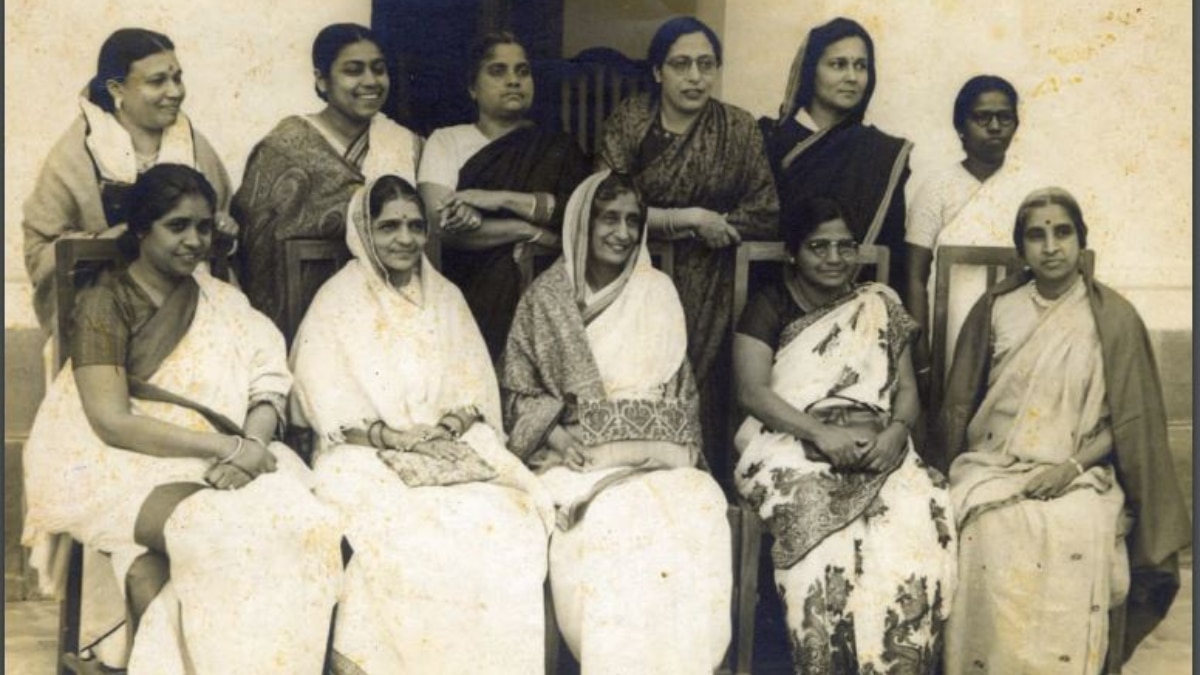Our Constitution was drafted during Partition and after a long period of colonisation, and it was a magnificent and dynamic process. Despite their membership in the Assembly, women’s voices and contributions have been ignored and overshadowed. The riveting work “The Founding Mothers of the Republic” by Achyut Chetan, published by Cambridge University Press in 2022, serves as a means of correcting this historical omission and giving due credit to the women who played a critical role in shaping India’s democracy.

Women in the Constituent Assembly
- When the Constitution was finished, 11 women members of the Constituent Assembly signed it.
- G Durgabai, Ammu Swaminathan, Amrit Kaur, Dakshayani Velayudhan, Hansa Mehta, Renuka Ray, Sucheta Kripalani, Purnima Banerjee, Begum Qudsiya Aizaz Rasul, Kamala Chaudhri, and Annie Mascarene were among the drafters.
- The Constituent Assembly convened for the first time on December 11, 1946, and met 169 times before all of its members signed the document on January 24, 1950.
What exactly happened in the Constituent Assembly?
- The only source is the Constituent Assembly Debates (CAD): The 12 volumes of the Constituent Assembly Debates (CAD), which consist of speeches made by members and amendments to the draught articles, are a rich but by no means the only source.
- CAD is missing a number of reports and notes from various committees: The CAD, on the other hand, lacks the reports and notes of the CA’s various committees.
- As an example: The Advisory Committee (chaired by Vallabhbhai Patel), which had two sub-committees, the Fundamental Rights Sub Committee and the Minorities Sub-Committee, did a lot of ground-breaking work.
Women’s Place in the Constituent Assembly
- Hansa Mehta and Amrit Kaur: Hansa Mehta and Amrit Kaur were both members of the Fundamental Rights Sub Committee, with Kaur also serving on the Minorities Sub Committee.
- G Durgabai: G Durgabai served effectively on two important procedural committees, the Steering Committee and the Rules Committee.
- Women were extremely active: Women were present and active on nearly all significant committees and subcommittees.
- Women members frequently faced disrespect and discrimination: Renuka Ray, for example, was opposed to the clause on the Right to Property, which put the compensation given under the jurisdiction of the courts. During the Assembly’s floor debates, she was constantly interrupted and heckled, even by men of eminence, and she attempted to mock their amendments.
- Women members voiced their concerns and stood firm: Amrit Kaur and Hansa Mehta wrote notes of dissent in committee settings against decisions that relegated the uniform civil code to non-justiciable rights, allowed the state to impose conscription for compulsory military service, and at each stage when the committees made their official recommendations to the Assembly’s higher bodies.
For example, consider Dakshayani Velayudhan’s perspective on reservation.
- Dakshayani Velayudhan, the only woman from the Scheduled Castes, spoke out against reservations.
- She refused to believe that 70 million Harijans should be considered a minority, arguing that reservations would not be in their best interests.
- She also argued that “the working of the Constitution will depend upon how the people will conduct themselves in the future, not on the actual execution of the law. When this Constitution is implemented, we do not want to punish people for breaking the law, but rather for the state to take on the task of educating citizens in preparation for a transformation.”
The current state of women’s political representation worldwide
- Representative governments have grown in number, but women continue to be underrepresented: According to UN Women, there will be 30 women serving as elected heads of state and/or government in 28 countries by September 2022. (out of a total of 193 UN member states).
- There is a disparity in active participation: There is a disparity between the rapid increase in female voter participation in elections and other political activities and the slow rise in female representation in Parliament.
- Average global female representation: The global average of female representation in national legislatures was 26.2 percent as of May 2022.
- Outstanding representation: The Americas, Europe, and Sub-Saharan Africa have higher female representation than the rest of the world.
- Asia, the Pacific region, and the Middle East and Northern Africa (MENA) region have below-average representation.
- Varied representation within Asian countries:
- South Asian countries fare worse than the rest.
- Women’s representation in Nepal, for example, was 34% in May 2022, 21% in Bangladesh, 20% in Pakistan, 17% in Bhutan, and 5% in Sri Lanka, according to IPU data.
- Women’s representation in India’s Lok Sabha (Lower House) has remained slightly below 15%.
- The study excludes Afghanistan, but according to World Bank data from 2021, female representation in the country’s previous parliament was 27 percent.
@the end
As we approach the 75th anniversary of our Constitution, scholars, teachers, students, lawyers, judges, and all others involved in our constitutional-making efforts should look to sources that tell a more complete story of our drafters. Both the quiet women and the more visible men should be remembered for their roles and contributions. That is a true account of how our founding document came to be.
Source: https://amritmahotsav.nic.in/blogdetail.htm?48
